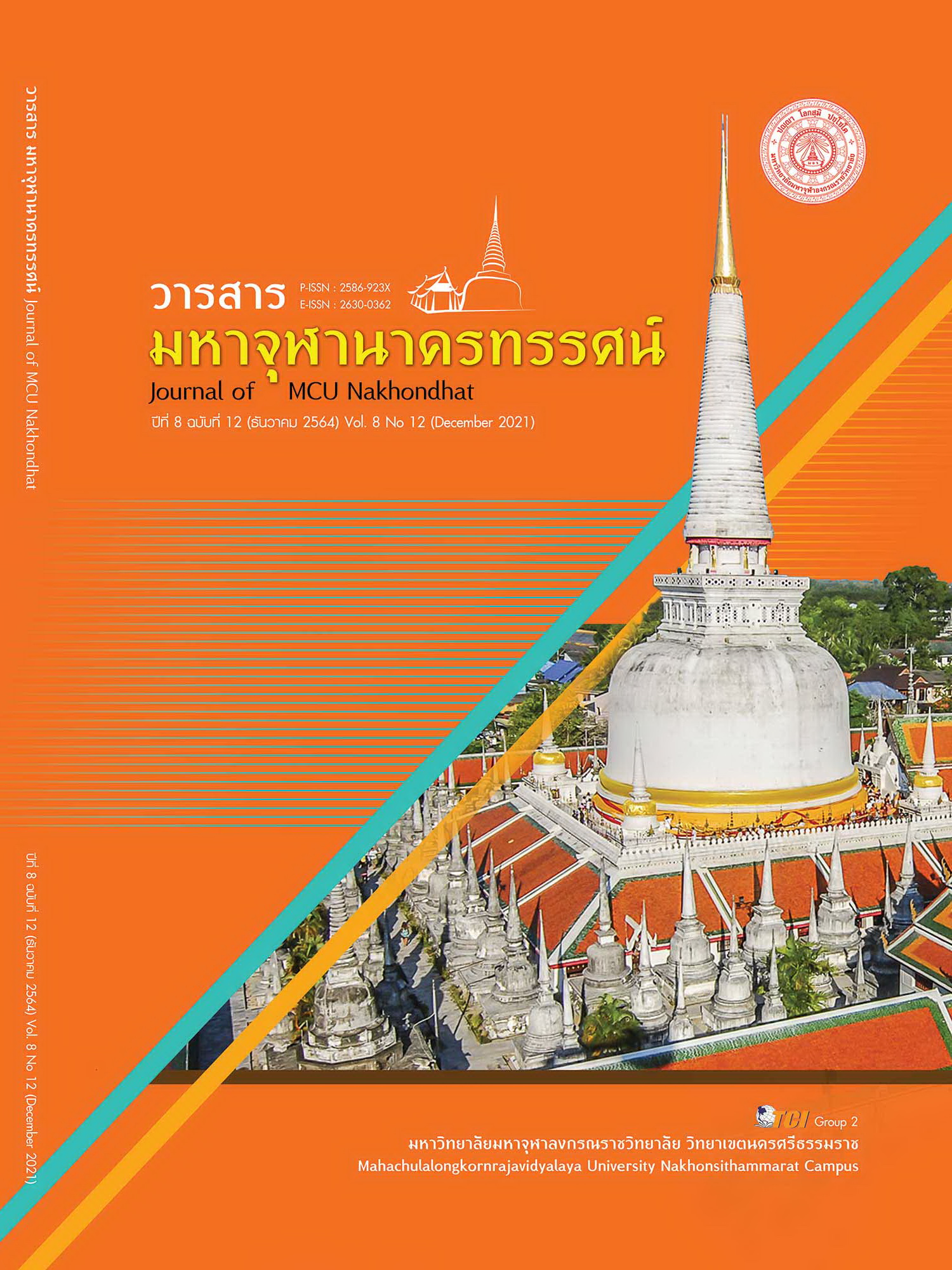ACCEPTANCE LEVEL AND BEHAVIOR OF THAI PEOPLE TOWARDS THE POLICIES AND MEASURES IN CONTROLLING AND PREVENTING THE COVID-19 PANDEMIC
Main Article Content
Abstract
This research aimed to (1) study the level of public acceptance of government policies and measures in controlling and preventing the COVID-19 outbreak during the initial period; (2) compare personal factors with the level of adoption of such policies and measures; (3) study the behavior of Thai people towards the policies and measures and; (4) analyze the association of personal factors with their behavior. Cross-sectional survey research was employed. The data was collected from a sample of 1,272 persons by an online questionnaire distributed through various public and private networks nationwide. The statistics used to analyze the data were percentage, mean, standard deviation, Chi-Square, t-test, and One-Way ANOVA. The results showed that the respondents accepted the policies and measures of the government to control the COVID-19 outbreak on average at a high level ( = 4.36, SD = 0.62). By which, they agreed with the measure of stay home, stop infection at the highest rank. But, on the other hand, they agreed with the lockdown measure at the lowest rank. Besides, respondents of different ages, marital status, education, occupation, and places of residence did differ in their acceptance of the policies and measures at a significance level of 0.05. The majority of the respondents followed the policies and measures. Moreover, the study revealed that personal factors in terms of gender, age, marital status, education, occupation, and places of residence, were significantly associated with the behaviors of the respondents at 0.05 level.
Article Details
References
สำนักงานคณะกรรมการกฤษฎีกา. (2563). รวมแถลงการณ์ ประกาศ คำสั่ง ตามพระราชกำหนดการบริหารราชการในสถานการณ์ฉุกเฉิน พ.ศ. 2548 ที่เกี่ยวกับสถานการณ์การแพร่ระบาดของโรคติดเชื้อไวรัสโคโรนา (Covid-19). เรียกใช้เมื่อ 27 เมษายน 2563 จาก https://www.krisdika.go.th/regulation
Babbie, R. E. (2020). The Practice of Social Research. (15th edition). New York: Cengage Learning.
BBC News. (2020). Coronavirus lockdown protest : What's behind the US demonstrations? Retrieved April 21, 2020, from https://www.bbc.com/ news/world-us-canada-52359100
Brueck H. et al. (2020). China took at least 12 strict measures to control the coronavirus. Retrieved March 27, 2020, from https://www.businessinsider. com/chinas-coronavirus-quarantines-other-countries-arent-ready-2020-3
Cochran, W.G. (1997). Sampling Techniques. New York: John Wiley & sons.
Dudden, A. (2020). South Korea took rapid, intrusive measures against Covid-19 – and they worked. Retrieved April 4, 2020, from https://www.theguardian. com/commentisfree /2020/mar/20/south-korea-rapid-intrusive-measures-covid-19
Prime Minister of Japan and His Cabinet. (2020). [COVID-19] Government Responses on the Coronavirus Disease. Retrieved April 18, 2020, from http://japan.kantei.go.jp/ongoingtopics/_00013.html
Rovinelli R. J. & Hambleton R. K. (1997). On the use of content specialists in the assessment of criterion-referenced test item validity. Dutch Journal of Educational Research, 2 (1), 49-60.
Salkind, N. J. (2015). Encyclopedia of Measurement Statistics 1st Edition. Calif: Sage.
The Washington Post. (2020). Stirrings of unrest around the world could portend turmoil as economies collapse. Retrieved April 20, 2020, from https://www.washingtonpost.com/world/coronavirus-protests-lebanon-india-iraq/2020/04/19/1581dde4-7e5f-11ea-84c2-0792d8591911 _story.html
Zhong B. L. et al. (2020). Knowledge, attitudes, and practices towards COVID-19 among Chinese residents during the rapid rise period of the COVID-19 outbreak: a quick online cross-sectional survey. International Journal of Biological Sciences, 16 (10), 1745-1752.


